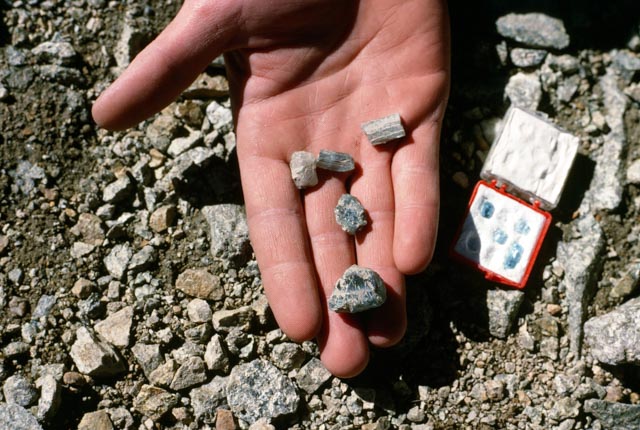When people learn I’m a mountaineer, they often ask, “Why? Are you nuts?” Of course, the answer is “Yes,” but there are some other reasons why people climb mountains. There are over 50 peaks in Colorado, over 14,000 feet high. One of them, near Buena Vista, where I was a youth minister, is Mt. Antero. Every year different gem companies send young people to the summit of Mt. Antero on a quest to find Aquamarine – the stone the Bible calls “Jacinth” (Revelation 21:20). Jacinth is one of the foundation stones of the walls of the heavenly Jerusalem.
When I reached the summit many years ago, I met a number of these young gemologists. They were excited to put down their shovels and picks and show me their treasures. Their aquamarine crystals were light blue, like the waters of the Mediterranean Ocean. In the ancient world, travelers believed that they had the power to protect their owners against shipwreck because they looked like the ocean.

Another interesting stone from the walls of heaven is amethyst. I think they are beautiful. Amethyst is a violet variety of quartz. In Greek, a- means “not,” and methysko means drunken. This refers to the Greek’s belief the stone protected the owner from drunkenness. Archaeologists have found many carved drinking vessels made from amethyst in hopes it would guard the owners against intoxication, but why is it a foundation stone? Perhaps because sobriety is a solid virtue.
Finally, have you wondered why diamonds aren’t included in the biblical list? According to the New Bible Dictionary:
The modern diamond was probably unknown in OT times, the first certain reference to it apparently being in Manilius (1st century AD).
The list of stones that make up the foundation of the walls of the heavenly Jerusalem is interesting, but the gates are what amaze me: “And the twelve gates were twelve pearls, each of the gates made of a single pearl” (Revelation 21:21). We’ll talk about biblical pearls in another article, but just imagine the giant oysters that made them! Put one of those in your Thanksgiving stuffing!
